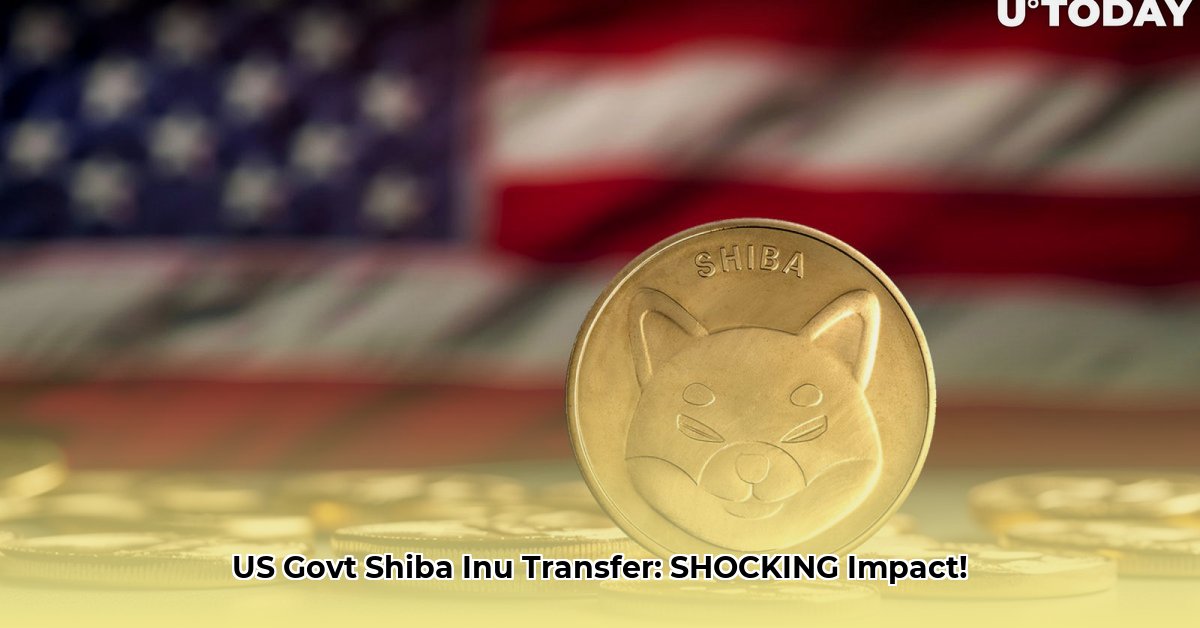
The Mystery of the $1.6 Million Shiba Inu Transfer
The recent transfer of 54.89 billion Shiba Inu (SHIB) tokens—approximately $1.6 million at the time of the transaction—by the US government has ignited debate within the cryptocurrency community and beyond. This significant movement of digital assets, seemingly without public explanation, raises critical questions about transparency, regulatory oversight, and the government's evolving relationship with cryptocurrencies. The lack of official comment adds to the intrigue, fueling speculation about the transaction's origins and implications.
Unraveling the Transaction: What We Know (and Don't Know)
The transfer wasn't an isolated event; it formed part of a larger movement of various digital assets, including Bitcoin. This suggests a potentially broader, yet undisclosed, government strategy regarding digital currency. However, crucial details remain frustratingly opaque. The source of the SHIB tokens remains unknown. Were they seized as part of a criminal investigation? Are they part of a previously unannounced government investment portfolio? This lack of information hinders definitive conclusions. Further complicating matters, the price of SHIB experienced a noticeable increase prior to the transfer, raising questions about potential insider knowledge or market manipulation. Was this a coincidence, or something more significant?
Did the price increase of SHIB before the transfer indicate insider knowledge? This question is central to understanding the broader implications of this event and requires further investigation.
Market Reactions and Interpretations: A Ripple Effect?
While the SHIB transfer didn't trigger dramatic market swings, its significance lies in its symbolic implications. It highlights the increasingly complex intersection of government and digital currency, underscoring the challenges of regulating decentralized technologies. The event prompts considerable speculation regarding future regulatory actions. Will this lead to stricter oversight of government-held crypto assets? Will it accelerate the development of clearer guidelines for handling seized or acquired digital currencies? These questions are central to the ongoing discussion.
Some experts predict tighter regulation, emphasizing the need for greater transparency and accountability in government crypto dealings. Others argue that the relatively small scale of the transaction within the broader crypto market minimizes its long-term impact. The continued debate highlights the event's significance and the need for ongoing analysis.
A quantifiable fact: The 54.89 billion SHIB tokens transferred represent a significant amount, even if the dollar value was relatively modest at the time of transfer. This highlights the need for clear protocols for handling government-held cryptocurrencies.
The Need for Clearer Guidelines: Mitigating Future Risks
This situation illuminates the urgent need for clear, comprehensive guidelines regarding government handling of cryptocurrencies. This isn't solely about SHIB; it's about establishing robust protocols for the management, transfer, and disposal of confiscated or acquired digital assets. The absence of clear rules breeds uncertainty, posing potential risks for the government, investors, and the broader market.
Potential Risks and Mitigation Strategies:
Lack of Transparency: This high-risk factor can erode public trust and create market uncertainty. Mitigation requires mandatory public reporting of government crypto transactions, independent audits, and ensuring a clear chain of custody for all assets.
Security Vulnerabilities: The potential for theft or loss of government-held crypto assets necessitates enhanced security protocols, such as multi-signature wallets and regular security assessments.
Regulatory Uncertainty: The lack of uniform regulations creates confusion and hinders innovation. Comprehensive regulatory frameworks, international cooperation, and industry consultation are crucial for mitigating this risk.
What's Next? Future Scenarios and Ongoing Research
Several scenarios could unfold. The government might issue a statement explaining the transaction, clarifying its origins and intent. Further investigations could significantly influence future regulatory decisions. Alternatively, this could prove to be a minor event in the ever-evolving crypto landscape.
“The lack of clarity surrounding this transaction underscores the need for greater transparency and well-defined regulatory frameworks within the crypto space,” states Dr. Anya Sharma, Professor of Finance at the University of California, Berkeley. “This incident serves as a valuable case study in the complexities of government involvement in a rapidly evolving technology.”
The uncertainty surrounding this event underlines the complexities of the evolving relationship between governments and the cryptocurrency world. Continued scrutiny and transparent practices are vital for both governmental bodies and the crypto industry. Further research is needed to fully understand the long-term implications of this seemingly minor, yet significantly symbolic, transaction.